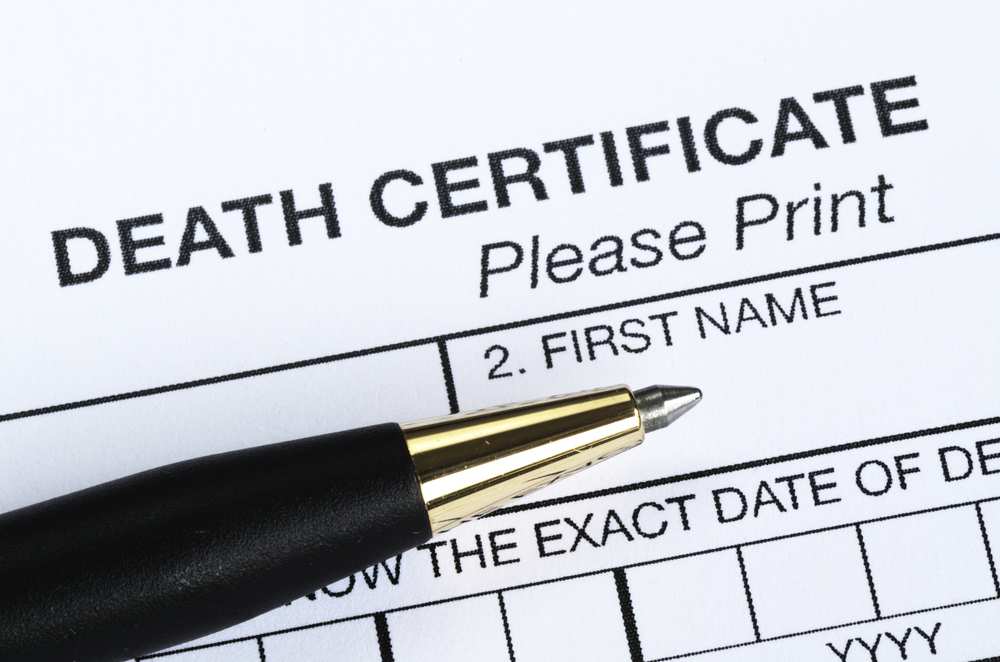Whoever said the “dead tell no tales” was clearly unfamiliar with forensic claims.
In cases of sudden or unexpected mortality, the humble death certificate can provide essential reading for the claims examiner often in conjunction with a police report or medical examiner’s report.
From observations of the body, to evidence of alcohol use, drug abuse or foul play, these reports reveal twists and turns as surprising as any detective story – but the examiner first must know where to search.
Enter forensic claims: the application of scientific techniques to more thoroughly evaluate a claim submission. Depending on the nature of a claim, a well-trained forensic claims examiner will request the death certificate, police, autopsy and toxicology reports and hospital records (it is less common to request a coroner's or investigating detective’s report). All can provide a wealth of information relevant to an accidental death or life insurance claim. After all, clues often come from the most unexpected places, from a flaming helicopter to a steaming cup of poppyseed tea. Consider these actual examples of forensic analysis:
- A young man dies in his home and the cause of death is initially listed as a drug overdose. An autopsy reveals opioids in his bloodstream, but was this the actual cause of death? The opioids were later determined to be natural components of the poppyseed tea he had legally purchased and was drinking at the time of death. However, the true cause of death was his concurrent and unprescribed use of marijuana.
- When a medical internist died of an insulin overdose, it was deemed purely accidental until examiners learned that the man was not a diabetic, which made his injection of insulin a suicidal act.
- When a state police helicopter fell from the sky in a fiery crash, the pilot’s autopsy revealed a toxic blood alcohol level. Was the pilot flying drunk? Examiners determined the high alcohol content was a consequence of a natural chemical reaction tied to combustion.
While forensic claims investigation is a specialty, it is founded in basic facts found in any death certificate. Let’s consider nine key clues examiners should look for today:
1. Recognize that “Undetermined” is a question – not an answer to the cause and manner of death.
In most U.S. states there are only five acceptable options for manner of death: natural, accident, suicide, homicide and “undetermined”. But “undetermined” is really a question, not an answer: it is an admission of continued uncertainty. It is also rare: it’s present in only about 3% of all U.S. death certificates. In some states, the term is used in place of a “pending” status.
When confronted with “undetermined,” clarify whether the death certificate is final. If the cause of death is a drug overdose, and the manner of death is labeled “undetermined”, there could be a question amongst the authorities about the cause: suicide, an accidental overdose or homicide.
2. Know that an “accident” is not always accidental.
Recreational drugs are growing in popularity, variety and chemical complexity. If a death is the result of the toxic effects of drugs or poisoning and there is no documented suicide note or instruction, the medical examiner or coroner will often call the cause of death an “accident” because there are only five choices available in the death certificate. This in no way precludes another entity from more narrowly defining the cause. In the case of an accidental drowning for example, a forensic toxicologist or pathologist would be able to determine from bodily organs if an opiate has been ingested. This could reveal that impairment from substance abuse was a contributing cause, as this central nervous system depressant slows breathing.
3. Check the marital status of the deceased.
If the claim is for a dependent spouse and the death certificate shows that the employee was not married at the time of death, it is entirely possible that the spouse is not eligible to be carried under an employer-based plan.
4. Consider where the death occurred.
For instance, if an insured is a victim of a homicide, could he or she also have been committing a crime at the time of death and would the location of the death provide a clue?
5. Determine the age and residence of any dependent child.
Many employer plans allow longer coverage for adult children. However some employers did not adapt to the newer norms and do not allow coverage for children older than 19 years unless they are fully dependent on the insured employee and also full-time students. A dependent adult child living outside the home and working a regular job is a red flag.
6. Clarify who is listed as the claimant.
The death certificate can provide information for surviving family members, especially when there are difficulties locating appropriate beneficiaries.
7. Identify who certified the death.
Often, fraudulent death certificates will be certified by a justice of the peace, a doctor in private practice, or individuals in occupations other than the typical medical examiner. Question the certification of any individual who does not appear to have the usual authority.
8. Recognize regulatory differences.
In Canada, each province has a unique death certificate, and the death certificate itself does not state a cause of death. This is typically supplied by a “funeral” death certificate or a physician statement. Information contained within death certificates may vary markedly between and within nations.
9. Ensure policy language is current.
Increased mortality fueled by rising abuse of prescription drugs and legalized medical marijuana has only complicated the policy adjudication picture. Many insurers have not adjusted accidental death and dismemberment language accordingly. For example, a recent RGA survey revealed that nine out of 16 U.S. group insurance carriers had policy exclusions to address whether a death was due to abuse of prescribed drugs or illegal substances. However, only 12% of Canadian carriers and zero U.S. insurers distinguished between medical and recreational marijuana use. Similarly, only 12% of U.S. carriers and a quarter of Canadian insurers reported taking steps to modify claims processes to identify consideration where intoxication or marijuana use was identified in the coroner's report as a significant factor contributing to a death.
“When you have eliminated the impossible, whatever remains, however improbable, must be the truth,” the famous fictional detective Sherlock Holmes once said. He could have been a forensic claims examiner. With the sound application of science and a little deductive reasoning, we often find that the truth of a basic death certificate is stranger than fiction.




